Text
Queen’s House

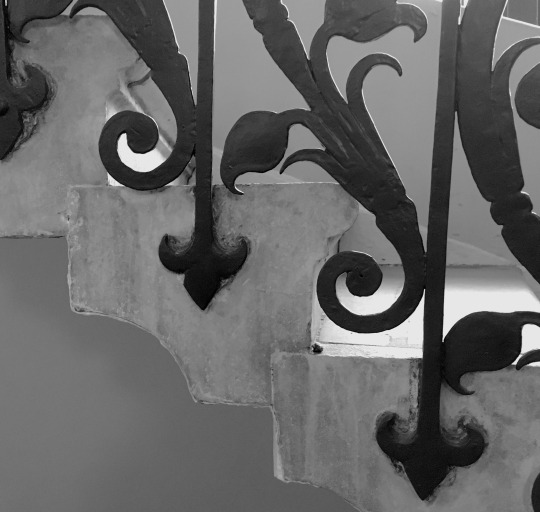
Inigo Jones’ Tulip Staircase at the Queen’s House in Greenwich. The first self-supporting staircase in Britain.
1 note
·
View note
Text
Healing the city
“We must put out the fires and start healing this great place with the love and understanding it needs.” Ian Nairn from Nairn’s London 1966
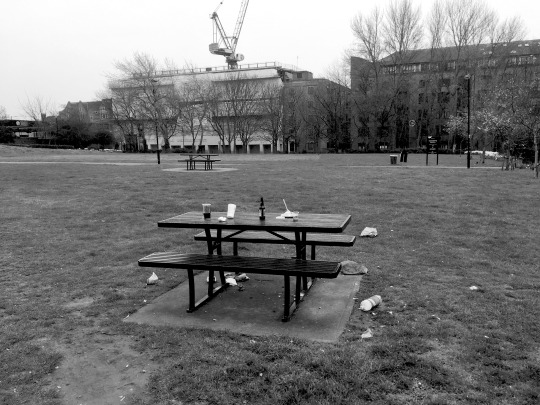
A stroll through Swedenborg Gardens in Whitechapel one bleak yet mild Sunday lunchtime. I enter the green space central to the St George’s Estate, bypassing a child who, having been caught short, is being assisted by their parents to relieve themselves by the corner of Wellclose Square. The gardens consist mainly of a grassy expanse, a number of picnic tables and a kids’ play area. A green oasis it is not; the busy main road and petrol station clearly in view and the looming towers of the estate border to the opposite side. A picnic table straight ahead of me is strewn with bottles and fast food paraphernalia. Two men sit at another table, drinking beer from cans and watch as I pass them. I sense eyes on me once again and with a quick glance towards the trees, I lock eyes with a man in the middle of a shifty looking transaction with another. I look away and walk on.
Once the site of a Georgian square built for the local shipmasters, this small parkland was reclaimed from the built landscape in the flurry of post-war development that so consumed the east of the city. It should be cherished, a small haven in the midst of all the concrete and tarmac, yet it appears sad and broken. So many spaces like this in the urban environment, but how do we fix them? The risk is that we once again wipe it all away in an attempt to cure the problem and in doing so break the crucial threads of any community that hold it all together.
0 notes
Text
Last Orders
The pub is a dying breed. At the time of writing, an average of 21 pubs close their doors for good each week in the UK. A decline in demand is not necessarily to blame (although culture has shifted to more people drinking in their own homes), although rising business rates together with the hefty price of a pint in some parts of the country is not helpful. In our cities, the price of the land is too valuable an asset for a lot of landlords/breweries to hold onto.
Camra, the Campaign for Real Ale, published an inventory of London pub interiors of historic interest in 2004. The pubs noted are not all listed, but the report serves to highlight a number of them that are considered to possess features or interiors that provide an insight into their rich histories in the landscape of British culture.
Looking at the list, I recognise a number of the pubs as having disappeared in the last few years. The Magdala pub in Hampstead where Ruth Ellis, the last woman to be hanged in the UK, shot her boyfriend in 1955 is just one of these. Now being turned into flats, it remains to be seen whether the developer of this Victorian pub, refitted in the 1930s, will leave the original windows with inset green strips, let alone the bullet holes in the exterior as testament to its back-story.
There are few historic pubs that retain their snugs, snob screens, and separate entrances. The purpose of these was primarily to enforce the social divisions that existed at the time, both in respect of class and gender. So I suppose this would indicate that we have at the very least made some progress in these areas over the last century.
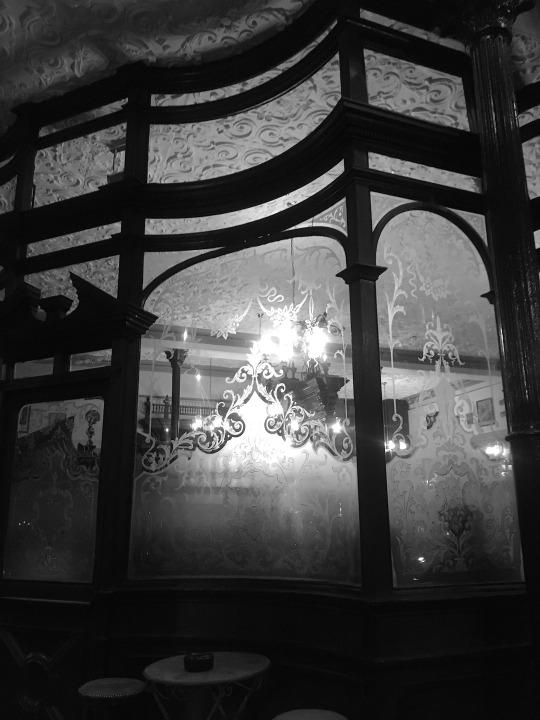
The curved etched glass windows of the Prince Alfred in Maida Vale
7 notes
·
View notes
Text
Disappearance
Small family run businesses are constantly dying out. High streets up and down the country succumbed to the chain store long ago and in an age of quick gratification and internet shopping, there is most likely no way back.
We yearn for these original little entrepreneurial gems. Gentrification, bringing both the chains and trendy independent offerings in its wake, unfortunately often undermining existing businesses, driving both prices up and those existing establishments out.
The local green grocer or butcher may have always struggled more in the city- the continual changing face of communities and areas of wealth create impermanence. So maybe even more reason to feel sad when another long-standing one quietly disappears. The old man serving behind the counter has done his time and is just playing his role in the story of the street. We just have to remember that this is progress and that the city has always renewed itself, whether it be due to fire, plague, bombs or even gentrification.
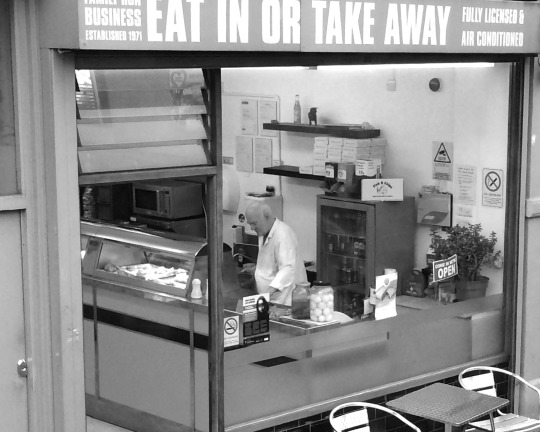
The local chippy, a family run business established 1971.
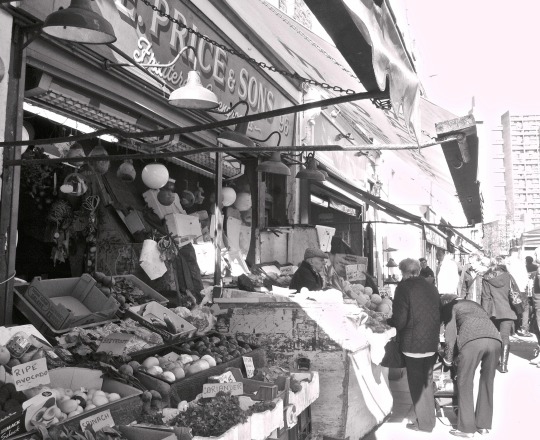
Fruiterer and greengrocer on Golborne Road in 2014. The store has since ceased to trade and is now boarded up.
0 notes
Text
Branding
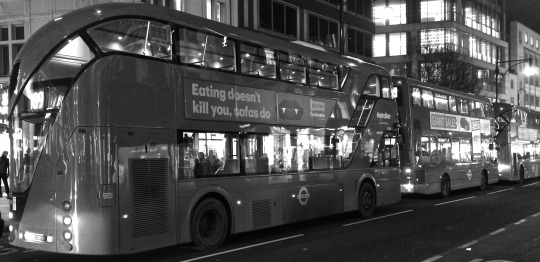
New York has yellow cabs and London has red buses*. Images of these city brands are ingrained in our minds and give us a sense of place, as much as any built landmark does.
Unlike the standard fleet buses that most bus operators ‘rouge up’ for the capital, the original Routemaster bus, was a bus specifically for London designed by London Transport. No other bus typology can boast such popularity, let alone be named by the average user, so it is unsurprising that the London Routemaster bus has so often been voted for in the top list of British icons.
Fiat and Mini successfully updated their much loved models with a modern twist, so the odds were that Thomas Heatherwick’s new Routemaster bus introduced in 2012 would be just as successful. A new bus for London, capturing the essence of the original, whilst making it feel contemporary and accessible.
In terms of design, Heatherwick nailed it. It is a faithful enough creation so as to feel familiar, yet is a new design in its own right. Unlike most other buses, it offers a more luxurious experience for the user- a sophisticated yet subdued colour palette, a soft glow of lighting and two staircases to choose from. It generally gives off the feel of quality, something that the average London commuter rarely experiences. I should also mention that its curvaceous posterior is very pleasing on the eye.
I am a fan, but it is not without fault either. Aside from a few teething issues, in an age of health and safety red tape, the hop-on hop-off feature serves little purpose and the overall bus is apparently costly to produce. Five years after its rebirth the Routemaster is once again to be laid to rest. In order to fund fare freezes, Mayor Sadiq Khan has decreed that no more Routemasters are to be introduced to the London bus system. London’s buses will once more have to rely on a coat of red paint to define them. That’s Pantone 485 in case you were wondering...
*London Transport adopted red for its buses upon its formation in 1933. Following privatisation in the 1980s, bus operators started introducing their own livery and branding, but a rule was introduced in 1997 that enforced a rule of 80% red. Since 2011, all new buses have to be 100% red - interior decoration remains the choice of the individual operator.
7 notes
·
View notes
Text
Park Crescent West

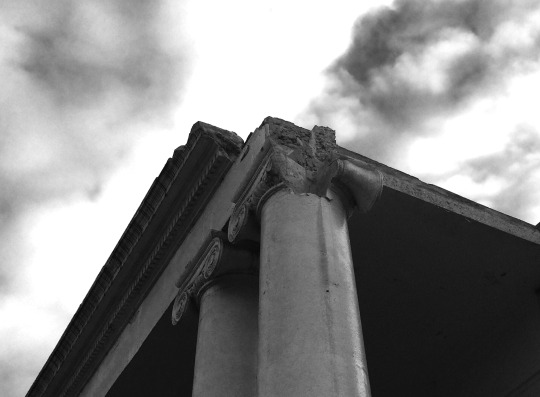
Remnants of the John Nash crescent following demolition.
2 notes
·
View notes
Text
Old stones
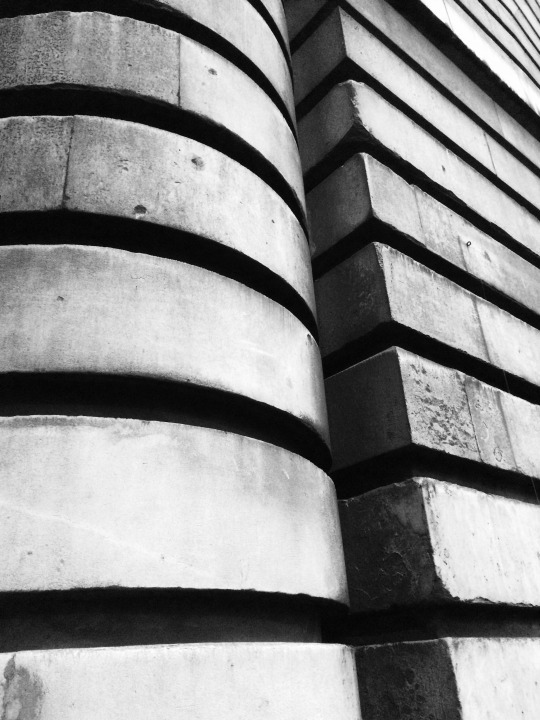
When considering older buildings, what do we decide is valuable enough worth keeping? Our cities must not become ancient monuments stuck in the past -although let’s face it these do attract tourists and everyone likes a trust/ heritage tea room and a gift shop don’t they? Older buildings serve as reminders of where we are, the identity of a place and in this way adding a dimension of interest to our built environment. Sentimentality probably also plays a large part in this – look at us, lapping up TV dramas soaked in nostalgia and harping back to the good old days. What is it that entices us to the old? The comfort of familiarity?
The built environment affects us deeply, even on a sub-conscious level. Its quality and appearance serves as a backdrop for the humdrum of everyday life and can impact greatly on our disposition. So more than anyone, we the user should have a say in our surroundings. One only has to look at Covent Garden to see what we may have lost if the public had not protested so vehemently against redevelopment once the fruit, veg and flower market had vacated the premises in the early 1970s. The old market has been adapted for a new generation; it functions in a different capacity for the current time and yet retains the soul of its former incarnation. People clearly felt that these ‘old stones’ were worth keeping and time has most probably told us that they were right.
Stopping redevelopment is not the way forward, but community consultation is often overruled in many cases where compromise could be struck and may lead to a better outcome.
Take the church of St Mary of Woolnoth in the City of London. A Hawksmoor creation, proudly sited on a corner of Bank junction, where it has sat since 1727. From the street it remains imposing; although dwarfed by looming glass giants in the background, its heavily rusticated Portland stone banding makes it appear quite contemporary. Hard to imagine now, post-war when churches in the City of London by Wren or one of his contemporaries are so revered, but during its lifetime it has been under threat on numerous occasions. At the end of the 19th century the City and South London railway were granted permission to demolish it. The people spoke out and this much admired building was saved, but the railway built too. Remarkably and in an under told story of historic subterranean structural feat, the crypt of the church was excavated (the bodies being exhumed and relocated elsewhere) and the structure of the church building supported on large steel girders, allowing the construction of the new station beneath. The station entrance at street level constructed as a single storey, leeching onto the side of the remaining church building – this extension is currently inhabited by a well-known coffee shop chain. The city it seems has always continued to evolve, old and new side-by-side and that’s clearly not to its detriment.
1 note
·
View note